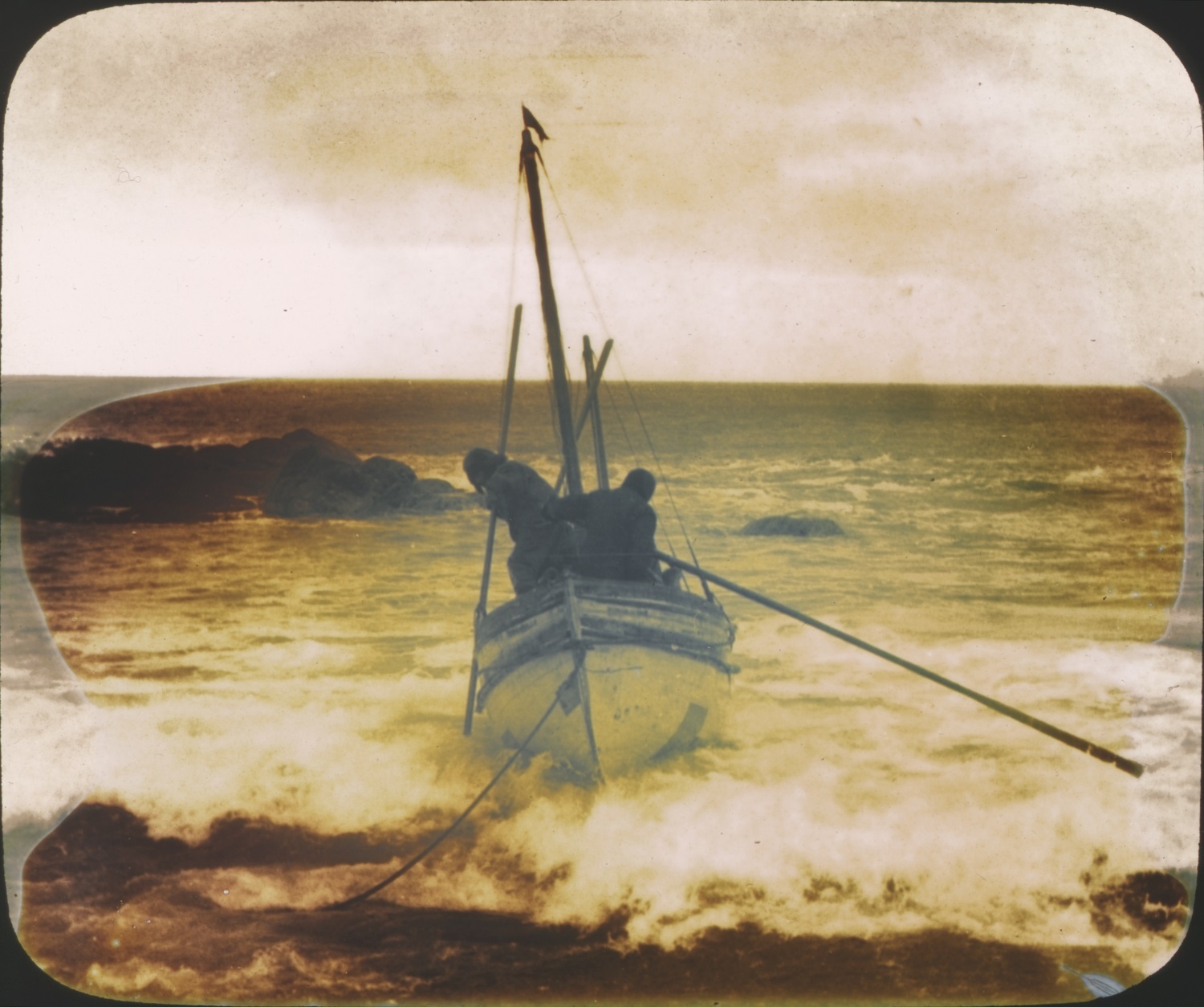In 1916, Ernest Shackleton and five of his men sailed from Elephant Island, Antarctica, to South Georgia in a lifeboat named James Caird. Their 14-day journey over 1,500 km of wild sub-Antarctic sea is one of history's most remarkable stories of survival and skill.
The voyage of the James Caird was born out of desperate circumstances. The Endurance, the main ship of the Imperial Trans-Antarctic Expedition, had been crushed by pack ice in October 1915, leaving its crew – led by Sir Ernest Shackleton – stranded. After camping on the ice until April 1916, the 28 expedition members eventually reached Elephant Island in the Endurance’s three small lifeboats.
With winter closing in and no prospect of being sighted by passing ships, the expedition’s carpenter Harry "Chippy" McNeish (also known as McNish) converted the sturdiest of the lifeboats, the 7 metre-long James Caird, for open sea travel. Shackleton, McNeish and four others set out in the James Caird to seek help from the whaling stations on South Georgia Island.

As part of the preparation for the Museum’s 150th anniversary publication, I was tasked to write about the James Caird Primus, the stove that had been taken on the journey and was vital to the men’s survival. I was pretty excited about this. I’d used Primus cookers on camping trips when I was a child and I was familiar with the story of Shackleton and the Endurance.
According to the Museum’s records the stove had belonged to carpenter McNeish and had been donated to Canterbury Museum in 1975 by Cameron Jelley.
When I began researching to find more details for the entry I started to discover problems. For a start the stove wasn’t actually a Primus, which is a brand name. The Primus stove taken on the Endurance expedition would have looked something like this:

The "James Caird Primus” at Canterbury Museum is actually a Comet Scout (no. 6) made by Hugo Möller of Sweden. This kind of stove has a tank beside the burner rather than underneath it like a Primus. While searching for information on that stove I happened on an online discussion forum for enthusiasts of classic camp stoves.

I found that there had been a discussion about the provenance of Canterbury Museum’s stove in 2003. The discussion finished with information from Robert Burton, former Director of the South Georgia Whaling Museum, who had spent a considerable amount of time researching Shackleton’s journey. He said:
Two primus stoves were taken on the James Caird to South Georgia (according to Shackleton’s equipment list). One was taken by him, Worsley and Crean on the crossing of South Georgia and jettisoned when the fuel was used up. The second Primus stayed with Chippy McNish, McCarthy and Vincent who camped under the upturned James Caird until rescued by the Norwegians. The men and boat were taken back to England and there is a photo of the boat and its equipment lying in a boatyard in Liverpool. A Primus stove of the 'ordinary' kind, burner on top of the reservoir, is clearly visible. It is not the same as the Comet Scout that belonged to McNish and currently at Canterbury Museum.
This was pretty conclusive information from a reliable source.
Next I looked at Harry McNeish’s life. After leaving South Georgia, McNeish travelled back to the United Kingdom on a whaling ship and worked for various shipping companies before moving to New Zealand in 1925.

According to one account, McNeish ended up working on the Wellington waterfront but when he was injured and unable to work he became destitute and slept in the wharf sheds. The dockworkers, who knew of his role on Shackleton’s expedition, made a monthly collection for him and organised for him to go to Ohiro Benevolent Home.
McNeish was at the home for a couple of years before he died in 1930, 5 years after he came to New Zealand. McNeish’s diary, kept while on Shackleton’s British Trans-Antarctic Expedition, was donated to the Alexander Turnbull Library by a Mr Fathers of Wellington College 5 years later in 1935.
The stove was donated to Canterbury Museum 45 years after McNeish’s death by Cameron Jelley, a Wellington civil servant who was 19 years old when McNeish died. There is no information about how Mr Jelley came to have the stove.
Evaluating the evidence it seems unlikely that the stove at Canterbury Museum is the stove that was on the James Caird. I am, like many people, genuinely sorry that it isn’t. It probably did belong to James McNeish but where and when he acquired it and where it was used are unknown.
Wherever it came from, it is a beautiful stove and its dents and solder indicate that it has a story to tell – just not the one about the journey on the James Caird. Comet stoves are relatively rare but due to its doubtful provenance, the stove couldn’t be included in the Museum’s anniversary book celebrating 150 treasured objects. The Museum hopes to update its display on Shackleton’s Imperial Trans-Antarctic Expedition in the redeveloped Canterbury Museum.





